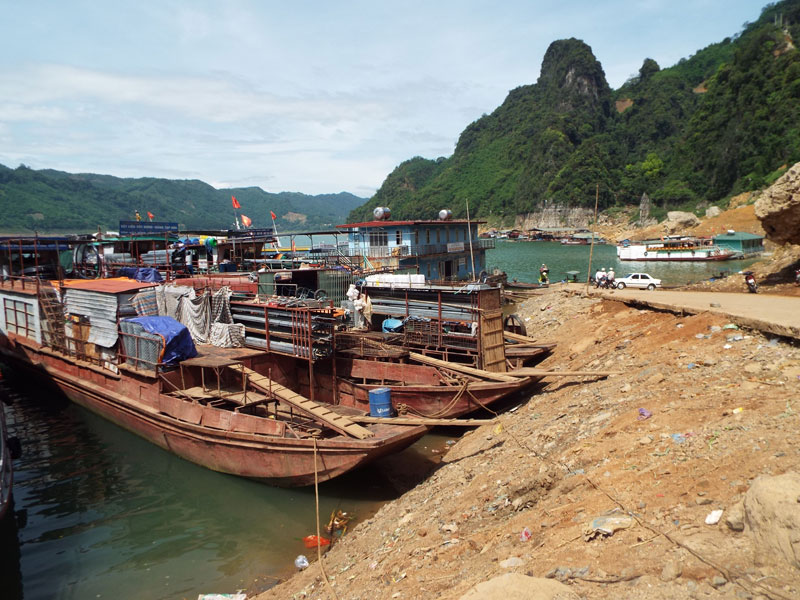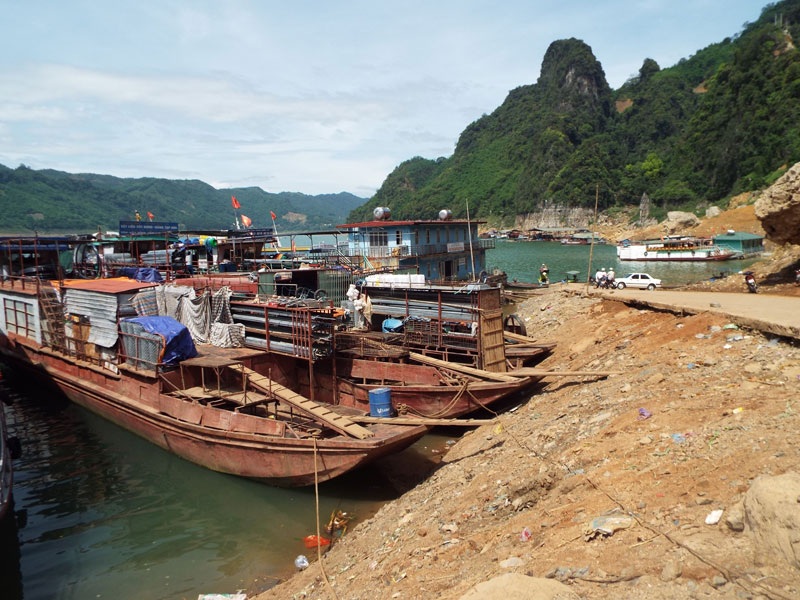
(HBO) – Bich Ha Port, located in the left bank of Hoa Binh Lake in Thai Thinh commune of Hoa Binh city, is one of the important facilities serving the transportation of goods from the city to communes bordering the lake and Son La province.
However,
the port’s infrastructure has degraded after years of being used. Without a
dock, tourists still have to move along natural paths, which is unsafe.
Meanwhile, boats carrying goods and tourists haven’t had their own areas to
operate at the port.

In the province’s port development plan until 2020,
Bich Ha Port will be upgraded to meet the requirements for the Hoa Binh Lake area
to become a national tourism site.
Problems of ports and wharves along the Da River
will be addressed soon when the provincial People’s Committee issued a plan on
the development of local ports until 2020. Bich Ha Port is set to be upgraded
to serve both goods and tourist transportation when Hoa Binh Lake becomes a national
tourism site.
Nguyen Ba Nhu, head of the transportation
division at the provincial Department of Transport, said the Prime Minister’s
approval of a plan on building the Hoa Binh Lake National Tourism Site is a big
favourable condition for Hoa Binh province to tap its tourism potential.
On May 31, 2017, the provincial People’s
Committee approved a development plan for inland ports in Hoa Binh until 2020.
Accordingly, some existing ports will be improved while three ports in the
downstream area of the Hoa Binh hydropower plant will be developed. Of which, Hoa
Binh Port in the right bank of the Da River will specialise in loading goods.
Another specialised port will be developed in the left bank of the Da River,
where a cement factory used to be located. The third port in Thinh Lang ward
will serve mixed purposes.
While Bich Ha Port will be upgraded to cater for
both goods and tourist transportation, Thung Nai Port will be expanded to serve
tourism. Some wharves are also expected to gain a facelift such as Binh Thanh
(Cao Phong district), and Bai Sang and Phuc San (Mai Chau district).
Provincial authorities are devising a plan to
balance resources for infrastructure investment so as to attract businesses to
developing tourism products for the future national tourism site of Hoa Binh
Lake./.
Located just a 20-minute drive from Hoa Binh City, Ora Hill Farmstay & Glamping Hoa Binh is a captivating new destination nestled in Mo hamlet, Bình Thanh commune, Cao Phong district. Combining farming with leisure, this tranquil retreat is perfect for those seeking balance, joy, and an immersive experience in the expansive beauty of nature.
Muong Bi - Tan Lac is renowned as one of the four famous Muong regions in Hoa Binh province. Blessed by nature with a favourable climate and stunning landscapes, Tan Lac holds great advantages for tourism development. The local tourism industry has made remarkable strides in recent times thanks to the attention and support from the local authorities and sectors.
With its strategic location, well-developed transport network, and diverse soil and climatic conditions, Hoa Binh is emerging as a must-visit destination in Vietnam's northwestern tourism corridor. The province boasts numerous attractions, including the Kim Boi hot springs (Kim Boi district), the Dau Rong cave complex (Cao Phong), the Mai Chau valley (Mai Chau), and the iconic Hoa Binh hydropower plant.
The northern mountainous province of Hoa Binh has been listed among the 71 most beautiful places to visit worldwide by the prestigious US travel magazine Condé Nast Traveller.
Hoa Binh province’s rich natural and cultural resources position it as a prime location for developing community-based tourism (CBT). In recent years, support from central and provincial policies, as well as assistance from non-governmental organisations, have encouraged local ethnic minority and mountainous communities to actively engage in the sector.



